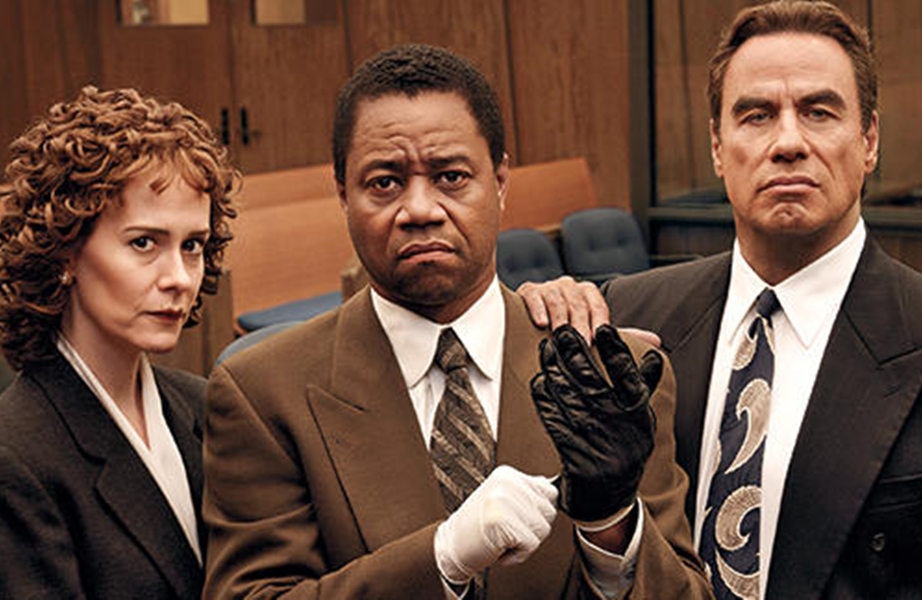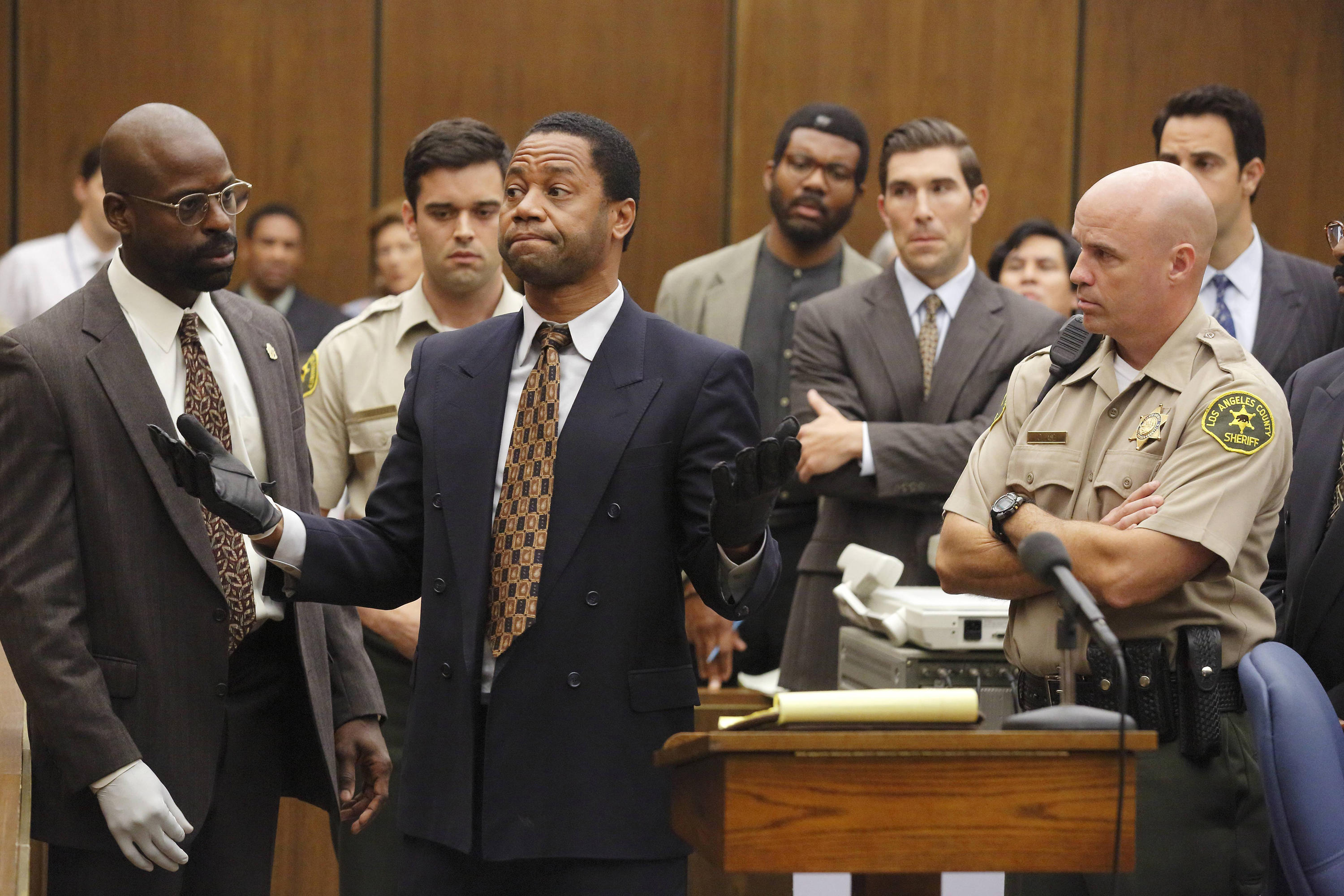What is the Goal of “American Crime Story” Telling the OJ Simpson Story?
The OJ Simpson trial is one of the most well-known court cases in American history. Dramatizing the story for television 20 years later is American Crime Story: The People Vs. OJ Simpson (2016), an FX miniseries produced by the typically-outlandish Ryan Murphy and Brad Falchuk. But what could have been a guilty pleasure exploitation of one of the nation’s most controversial cases is something far superior. Instead, the series is a nuanced and well-cast production rampant with modern parallels focusing on the trial’s larger subjects. It reveals the weaknesses that still permeate society today, uses subtext to rouse meditation on racially-charged current events, and explores the somewhat shameful evolution of reality TV and cable news production. Despite the ways in which the internet, cell phones, and networking have pushed modern society to new places of understanding and information, the series reminds us how little we’ve progressed as people beneath our massive scope of reach.

“We are Kardashians. And in this family being a good person and a loyal friend is more important than being famous. Fame is fleeting. It’s hollow. It means nothing at all without a virtuous heart.”
That’s what Robert Kardashian (David Schwimmer) tells his kids—you know who they are—in a mordantly ironic and acerbic scene capturing one of the series’ ideological perspectives. The series is carefully structured to examine a unique facet of social consequence with each episode. Its primary success lies in the fact that the show is rarely about OJ or the trial. Instead, it uses the trial we know as a backdrop, grabs the complexities of its details and strips them down one component at a time, showcasing exactly how they may have played out, and how the cultural, social, and technological landscape of the era played a role in muddling and confusing the details. OJ’s trial took place when the advent of news reporting as we know it today, media celebrity, DNA evidence, the internet and social technology were all in their infancies of popular practice. The result made his acquittal possible, through a judicial process that we retrospectively realize may have been capable of playing out out in this manner only at this exact point in time.
Cuba Gooding Jr. is OJ Simpson, and the actor plays the role without the showboating characteristics for which OJ is known. This is not a detriment to Gooding Jr.‘s ability, but a testament to the show’s intentions. When people think back on the case, they remember certain names beyond Simpson: Shapiro, Clark, Cochran, Ito. These are the faces that became parodied on Seinfeld (1989), who were ridiculed in the news media for things like eyebrows and haircuts, and who were receiving attention for everything beyond their work on the case.
The series strives to show us a strong and heroic Marcia Clark (Sarah Paulson) battling single motherhood, endless working hours, constant media surveillance, degrading tabloid gossip, and an impossible level of scrutiny for every action she took, inside the courtroom and out.
We’re presented with a layered and controlled Johnnie Cochran (Courtney B. Vance), witnessing both the snake-oil huckster the media remembers and a quiet, contemplative lawyer who switches from showman to subtle human depending on whether or not the cameras are rolling. American Crime Story wants us to see the actual people beneath the images we received from television and tabloids 20 years ago, humanizing them to a level the news wasn’t interested in projecting.

Looking back on the case, witnessing the convoluted way it was presented in the media, recalling the atmosphere of racial injustice caused by the Rodney King trials just a few years earlier, understanding the exhaustive responsibility of the jurors who wanted to go home (and who were endlessly sniped and swapped by the lawyers), and detailing the race versus gender foundation upon which the media circus was built on carefully-calculated demographics, it’s easy to see how an obviously guilty man was acquitted. Everything quickly became less about the facts and more about sensationalism, which is often the motto of modern-day reporting. The hippodrome of a court room and the media spectacle it launched was the birth of television media as we know it today, and the events of the trial play out so unbelievably that it’s often hard to imagine this was a real-life thing that actually happened.
Simpson’s Bronco chase interrupted all programming on television while it happened, including that year’s NBA finals. It is one of those TV moments that is burned into the memory of everyone who saw it, regardless of age, race, or location. It also prepped Americans for the onset of tabloid television, ironically now championed by those same Kardashian children who received a verbal lesson in humility from their late father years ago.
American Crime Story turns the modern viewer’s mind to #BlackLivesMatter, Ferguson unrest, Bill Cosby, and to the way we handle race in today’s media, revealing precious little has been made in the way of advancement. The difference is that today, in a landscape of Twitter and blogs, almost everyone can be guilty of perpetuating sensationalism the way the news did in ‘95.
“It is a before and after moment, in terms of our ability to consume tragedy as entertainment as a culture. Certainly we hope people will talk about that,” series producer Nina Jacobson told Salon. “But if you thought that you could be over hearing people having complicated conversations about race, about gender, about class — about all the things that have or haven’t changed – well, it would feel like an incredible accomplishment if just we got people talking.”
That is the root of what American Crime Story is doing. It isn’t about OJ or re-telling a story we already know, it isn’t about glamorizing a terrible murder or offering human suffering as entertainment, but about seeing how it happened, thinking about how it applies today, and questioning why things aren’t all that different decades later.

